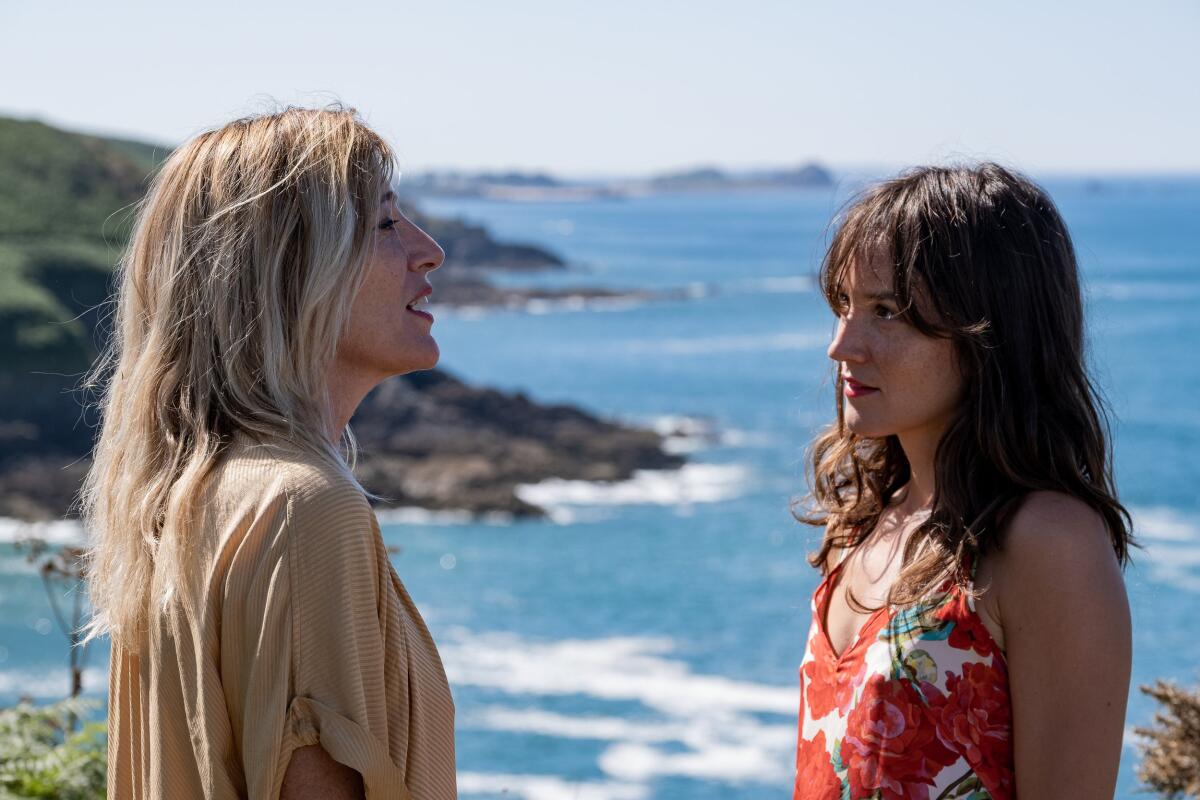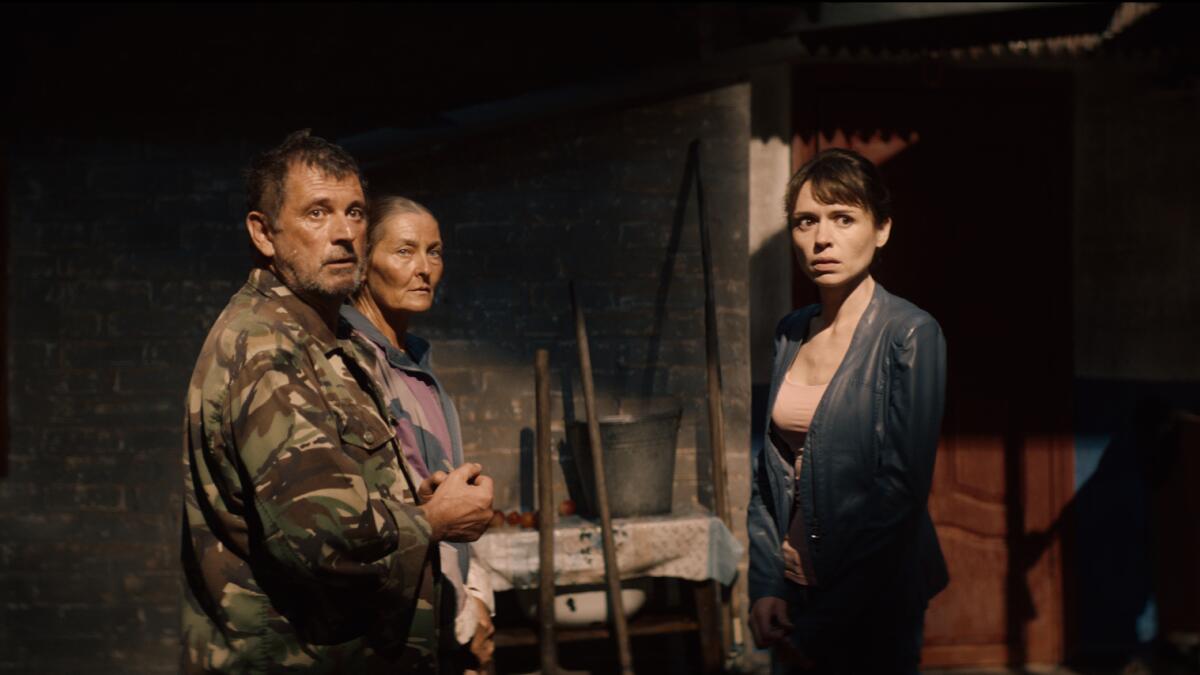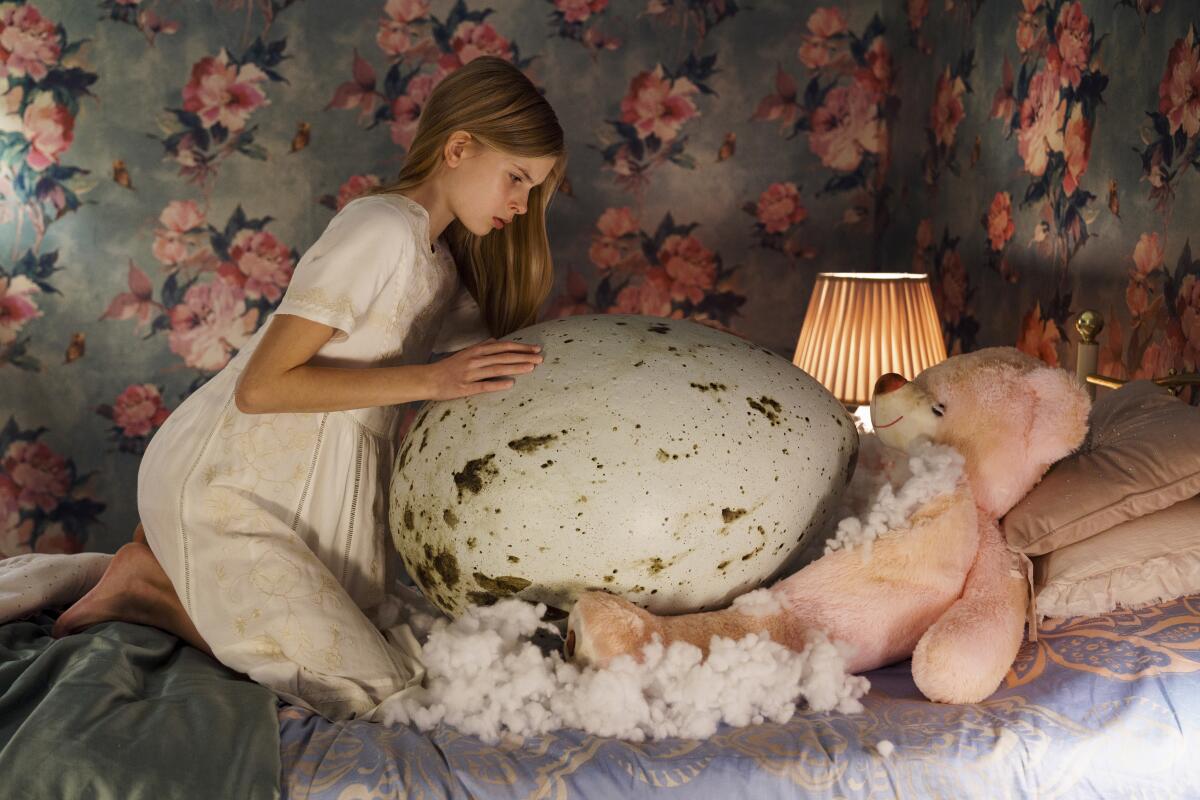A young woman’s dynamic self-discovery in ‘Anaïs in Love’

- Share via
Hello! I’m Mark Olsen. Welcome to another edition of your regular field guide to a world of Only Good Movies.
Only good movies
Get the Indie Focus newsletter, Mark Olsen's weekly guide to the world of cinema.
You may occasionally receive promotional content from the Los Angeles Times.
A restoration of “The Wobblies.” In recognition of International Workers Day on Sunday, May 1, the American Cinematheque will screen the new 4K restoration of Deborah Shaffer and Stewart Bird’s 1979 documentary, “The Wobblies,” at the Los Feliz 3. Recently entered into the National Film Registry of the Library of Congress, the film is a look at the Industrial Workers of the World — also known as the IWW or the Wobblies, a pioneering group for organized labor founded in 1905 — featuring interviews with then-still-living members of the group. With the current rise in unionization efforts among workers across industries (and anti-union pushback from corporations), the timing for this film to reemerge is perfect.
“Just Another Girl” at the academy. On Wednesday, May 4, the Academy Museum will screen a new restoration of 1992’s “Just Another Girl on the I.R.T.” with writer-director Leslie Harris in person in celebration of its 30th anniversary. The film stars Ariyan A. Johnson as Chantel, a Brooklyn teenager attempting to hide a pregnancy, Brimming with an infectious energy, centering what it was like to be a young Black woman in the early ’90s, the film gives the character space to explore her own complexities. The program will also include Harris’ documentary short “Never Forget.”
“Songs for Drella” rediscovered. On Thursday, May 5, Mezzanine Film will present the L.A. premiere of the new 4K restoration of “Songs for Drella,” the 1990 concert film of Lou Reed and John Cale performing the moving cycle of songs they wrote in tribute to their onetime collaborator Andy Warhol. Shot over three nights at the Brooklyn Academy of Music, this performance was captured before they recorded an album of the same songs. Director Ed Lachman, better known as an acclaimed cinematographer, rediscovered the original negatives while doing research for Todd Haynes’ documentary “The Velvet Underground.” Lachman is scheduled for a virtual Q&A, and the program will also include the U.S. premiere of Lachman’s 1985 “Report From Hollywood,” a portrait of director Wim Wenders shooting his movie “The State of Things.”
Enjoying this newsletter? Consider subscribing to the Los Angeles Times
Your support helps us deliver the news that matters most. Become a subscriber.
‘Anaïs in Love’
The feature debut for writer-director Charline Bourgeois-Tacquet, “Anaïs in Love” stars Anaïs Demoustier as Anaïs, a Parisian 30-something still struggling to find direction as she moves through life with an infectiously chaotic energy. She begins an affair with Daniel (Denis Podalydès), an older book publisher, but then finds herself more truly taken with his partner, Emilie (Valeria Bruni Tedeschi), causing complications and upheaval for all three of them. The film is in limited release now and will be available May 6 on VOD.
For The Times, Robert Abele wrote, “While Anaïs is a charismatic energy source, and Demoustier’s fizzy, swirling portrayal as wonderfully in the moment as it can be, the filmmaker’s astute treatment of Emilie — the beguiled target who knows how to re-shift the molecules in the air — is what ultimately, intelligently crystallizes the themes of seduction, pleasure and what’s too often untapped about female power. It’s easy to see what’s Rohmer-ian in the basic architecture of ‘Anaïs in Love,’ yet there’s no denying this is a narrative whose wisdom and nonjudgmental perspective on life, love and learning is a woman’s. May we get many more tales of zestful turbulence from Bourgeois-Tacquet, a storyteller to watch.”
This week, we had an Indie Focus Screening Series event, giving subscribers an early chance to see the film in a theater. Because Bourgeois-Tacquet was not going to be in Los Angeles, we pre-taped a Q&A with her from Paris. And you can watch it now on YouTube. Of her lead character’s similarity to the women in “Frances Ha” or “The Worst Person in the World” (which premiered at Cannes 2021 as did “Anaïs in Love”), Bourgeois-Tacquet said, “It was important to me to write about a young woman in her 30s, it’s such an interesting time, so ripe for dramaturgy, when so many decisions have to be made about a career, a romantic life, do they want children, who do they want to live with. ... To me it was very, very rich material.”
For the New York Times, Manohla Dargis wrote, “While a likable woman is fine in life (or so I’ve heard), in fiction she can get dull awfully fast. Anaïs isn’t boring; she’s lovely. And while beauty is her most obvious attribute, she has a sharp mind, an impertinent tongue and, crucially, the unsettled, inchoate yearning that draws the eye, stokes the imagination and has long fueled heroic quests. She is, in other words, a 21st-century human being who, in finding herself on her own stubborn, singular, unquiet terms, has ditched the usual script about men, women, pleasure and desire. And while to watch Anaïs is to be sometimes annoyed by her, yes, to truly know her is to love her.”
For Deadline, Valerie Complex wrote, “Yeah, Anaïs gets everything she wants, but sometimes, it’s good to let women win. Understanding her pathos can take some work as the signs are subtle, and it can appear as if Anaïs doesn’t learn anything new, but that’s not the case. By the end, she’s working, writing, and more self-aware. Anaïs realizes what it feels like to lose and be rejected, albeit for a brief moment. By the conclusion, we get a woman who matured somewhat, and the catalyst for that was finding someone she could connect with beyond sex. Now that’s real Love.”
For the Wrap, Katie Walsh wrote, “The connection between the two women is real, and their steamy, beachside affair is one of the only times we ever see Anaïs focus and relax. But again, as the audience, we have to wonder, as even Emilie does, what this affair means for Anaïs? Is her laser-focus attention on Emilie actually love and adoration, or is it a projection of what she eventually wants for her own future? It’s these chewy, complex themes that make this otherwise light-as-a-feather, sexy, quirky, coming-of-age comedy much deeper, and more existential than it seems.”

‘Bad Roads’
Directed by Natalya Vororzhbit, “Bad Roads,” an anthology film of four short stories set along the roads of the country’s Donbas region, was selected as Ukraine’s entry for the Academy Awards. The film is available via Laemmle’s virtual cinema.
For The Times, Justin Chang wrote, “The four tales told in ‘Bad Roads,’ Natalya Vorozhbit’s bleak and unnerving first feature, add up to a startlingly grim panorama of life during wartime. We are in the battle-scarred Donbas region of eastern Ukraine, sometime after the spring of 2014, when tensions between Ukrainian government forces and Russian-backed separatists flared into armed conflict, but long before the terrible escalations of the last few months. Like Sergei Loznitsa’s recently rereleased ‘Donbass,’ though less sprawling in scope and more intimate in feel, this omnibus work functions as both a lament and a prophecy. With each story, Vorozhbit pulls us a little deeper into the heart of contested, occupied territory, where soldiers and civilians dwell in unbearable tension, women are grievously exploited and, as the title suggests, wrong turns and ill-advised journeys abound.”
For Variety, Alissa Simon wrote, “In the bleak omnibus film ‘Bad Roads,’ four tension-filled tales set along the dangerous byways of Ukraine’s Donbass region during wartime illustrate survival strategies practiced by civilians. Although the various episodes don’t quite add up to a strong narrative whole, they do gain extra resonance from current events in this troubled region. Naturalistic in visual style and performance, they also introduce a new talent to watch in debuting writer-director Natalya Vorozhbit, better known as a playwright. The film, adapted from her earlier play, premiered in Critics’ Week of the 2020 Venice Film Festival. The Ukrainian Film Academy named the helmer ‘Discovery of the Year,’ along with other kudos.

‘Hatching’
The feature debut from director Hanna Bergholm, “Hatching” is a Finnish horror fable about the struggles of a teenage girl, Tinja (Siiri Solalinna), as she tries to live up to the expectations of her aspiring online-influencer mother (Sophia Heikkilä). When Tinja tends to an egg she finds in the yard, it soon hatches a creature she names Alli, and the two grow closer and closer. The film is in theaters now and will be on VOD May 17.
For The Times, Katie Walsh wrote, “The script, by Ilja Rautsi is a classic monster movie, using the violent humanoid bird creature as an external representation of Tinja’s repressed emotions. As Tinja cares for Alli, feeding her, protecting her, the two become true doubles, more physically alike and psychically linked. The way Alli absorbs Tinja’s anxieties reflects the way the girl’s mother has raised her, reinforcing her own toxic perfectionism on her child. The monster metaphor is plainly laid out in ‘Hatching,’ but crucially, the film resists over-explaining, allowing details to remain mysterious and the viewer to speculate and imagine rather than be spoon-fed explicit answers.”
Sonaiya Kelley spoke to Bergholm for a story that will be publishing soon. As for what she wants audiences to take away from her eccentric body horror story, Bergholm said, “The biggest message is that you have to accept other people and also yourself fully as you are with all your flaws. You can’t just hide and try to brood all of your darkest emotions; you have to at some point control them. It’s very important to face your emotions and acknowledge them and accept that they are there. And I would say that the biggest message is that it’s OK to not be OK.”
For the AP, Lindsey Bahr wrote, “The story might not be the most subtle creation, but it does an incredible job at poking holes in the gnawing fear of all perfectionists, especially girls on the verge of puberty, that the pretty veneer is hiding something ugly, or worse. But repression has ugly consequences, too. … ‘Hatching’ is an assured and promising debut for Bergholm with a jaw-dropping ending that may just cement it as a cult classic in the making.”
For the Playlist, Robert Daniels wrote, “‘Hatching’ is wholly unpredictable. Through screenwriter Ilja Rautsi’s original premise, Bergholm aims to traverse the difficulties faced by teenage girls: Bulimia, menstrual cycles, pregnancy, and bodily agency. But most of all, Tinja contends with the loss of her mother — not in a physical sense, but in an emotional one. Her mother, imbued with startling complexity by a forceful Heikkilä, drifts away from Tinja by finding a new family. That loss causes the gymnast to pour her full emotional will, the mothering instincts her mother seems to lack, into that decrepit, seemingly rotting blackbird, rendered to alarming horror by the film’s sturdy visual effects. … ‘Hatching,’ a smartly constructed fright machine, not only introduces a new and exciting voice to the horror landscape but cracks its way through the brain like a beak through a shell.”

Only good movies
Get the Indie Focus newsletter, Mark Olsen's weekly guide to the world of cinema.
You may occasionally receive promotional content from the Los Angeles Times.




